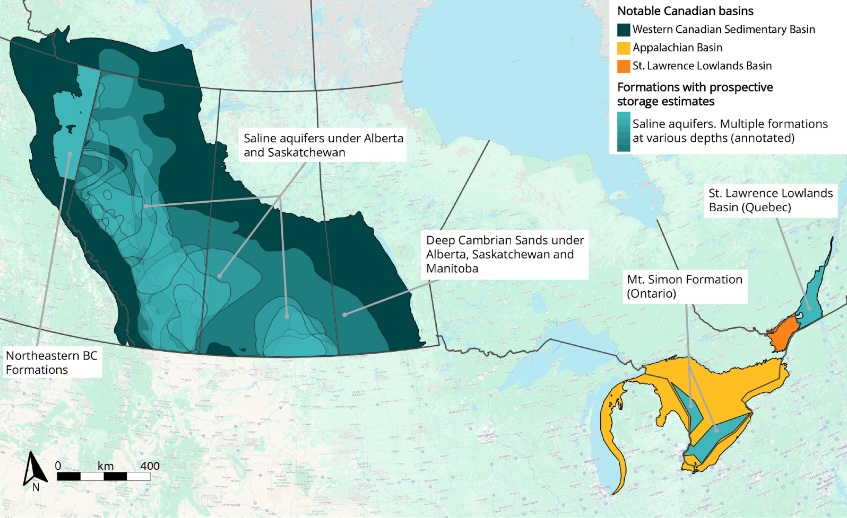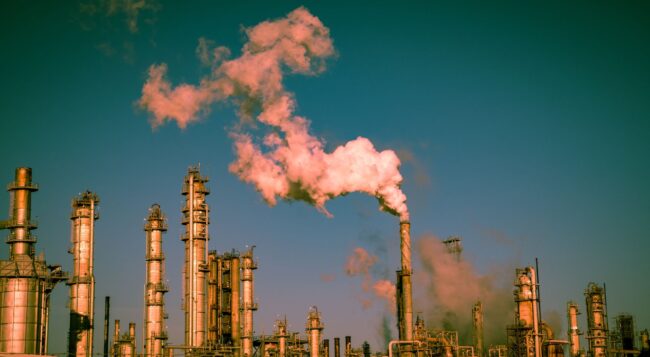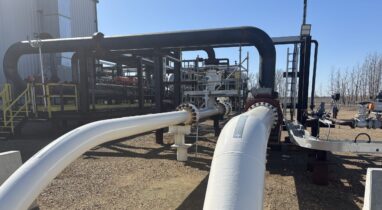Carbon capture, utilization, and storage (CCUS) is emerging as an important opportunity in Canada’s path towards net zero.
“Evaluation of carbon capture and storage potential in Canada,” a research report from Clean Prosperity’s Net-Zero Pathways for Canada project, examines the potential of CCUS technology to address emissions from Canada’s major industrial sectors. Altogether, industry produced over 317 megatonnes (Mt) of emissions in 2021, almost half of Canada’s total.
Canada has rich potential for geological carbon storage — approximately 389 gigatonnes of prospective onshore storage, located mostly in Saskatchewan, Alberta, and Manitoba. That’s almost 600 times the mass of Canada’s total 2021 emissions.
The research report looks at the expanded use of saline aquifers for permanent carbon dioxide storage in five key Canadian provinces: British Columbia, Alberta, Saskatchewan, Ontario, and Quebec.
To assess the potential for using CCUS to decarbonize industry in these provinces, the report maps the locations and emissions of high-emitting industrial facilities that could integrate CCUS technology. These facilities are grouped according to their distance to potential geological storage basins, and to functioning or planned infrastructure for CO2 transport and injection.
Basins in Canada that contain potential reservoirs for CCUS storage

Key findings by province
- Most of British Columbia’s prospective geological storage is in the province’s remote northeast region. Only about 1.2 Mt, or 20%, of the province’s industrial emissions are close to storage, suggesting that CCUS applications are currently limited without the discovery of new storage basins, the development of new technologies, or the construction of CO2 pipelines.
- Alberta has significant opportunities to leverage its 79,000 Mt of geological storage and existing CCUS infrastructure to help decarbonize sectors like the oil sands and utilities. Currently many high-emitting facilities are located close to storage, as well as to CO2 transport and injection infrastructure. The theoretical emissions capture potential from current industrial sources in Alberta could be as high as 104 Mt per year, equivalent to more than 40% of the province’s total 2021 emissions. To realize this potential, proposed infrastructure needs to be developed, including capture facilities, pipelines, and injection hubs.
- Saskatchewan overlies 290,000 Mt of prospective storage, which represents 70% of Canada’s estimated total geological storage potential. The province also has a history of developing CCUS infrastructure. Industrial emitters are scattered geographically, which may present challenges for the development of shared infrastructure. But with its significant storage resources, Saskatchewan could be a particularly attractive destination for developing a large-scale atmospheric carbon dioxide removal sector.
- Ontario’s CCUS potential is significantly constrained by the province’s limited geological storage, estimated at 730 Mt. Ontario lacks existing CCUS infrastructure, and would have to make significant investments to capture and store its 31 Mt per year of industrial emissions. With such limited storage potential, the Ontario basin could reach capacity by 2060-2075, so a CCUS development strategy in this province needs to be selective and balanced with other emissions reduction measures.
- Quebec has significant geological storage resources (up to 3,200 Mt), and 44%, or 6.4 Mt, of point-source emissions located above storage. Like Ontario, Quebec currently lacks carbon management infrastructure. Given the relatively low volume of emissions from large point-sources in the province, CCUS development should be evaluated alongside other decarbonization opportunities, or in tandem with atmospheric carbon dioxide removal.




